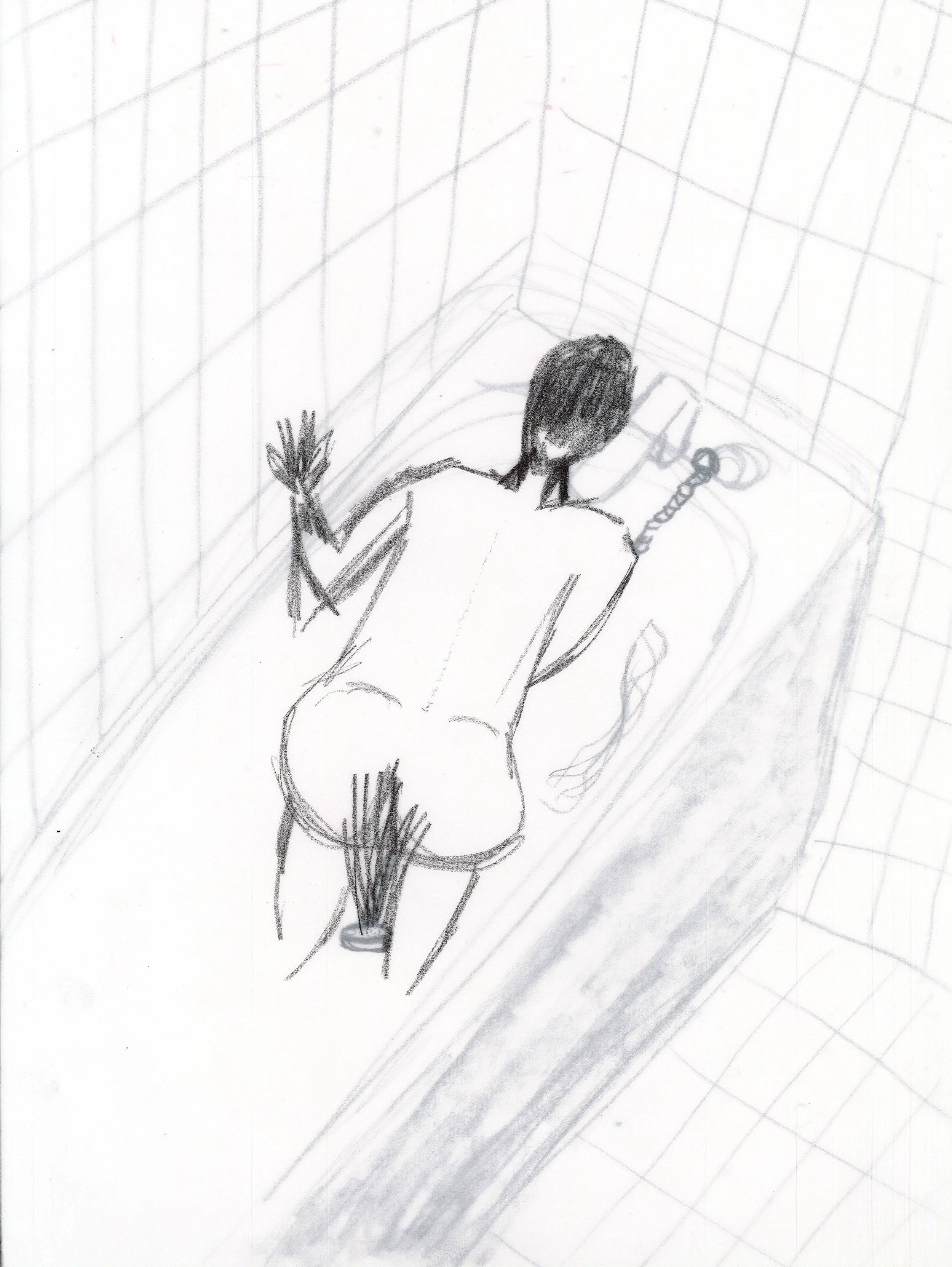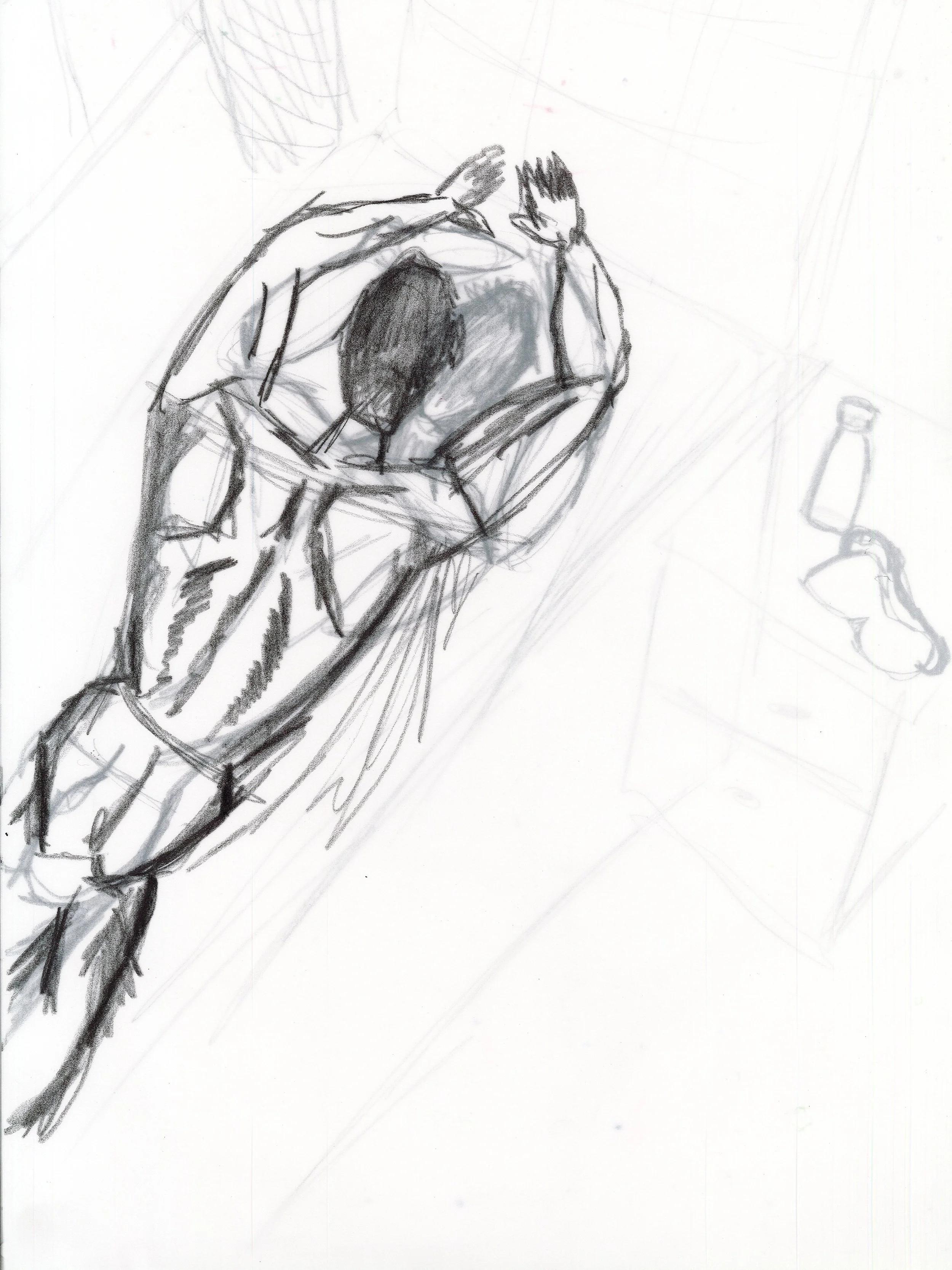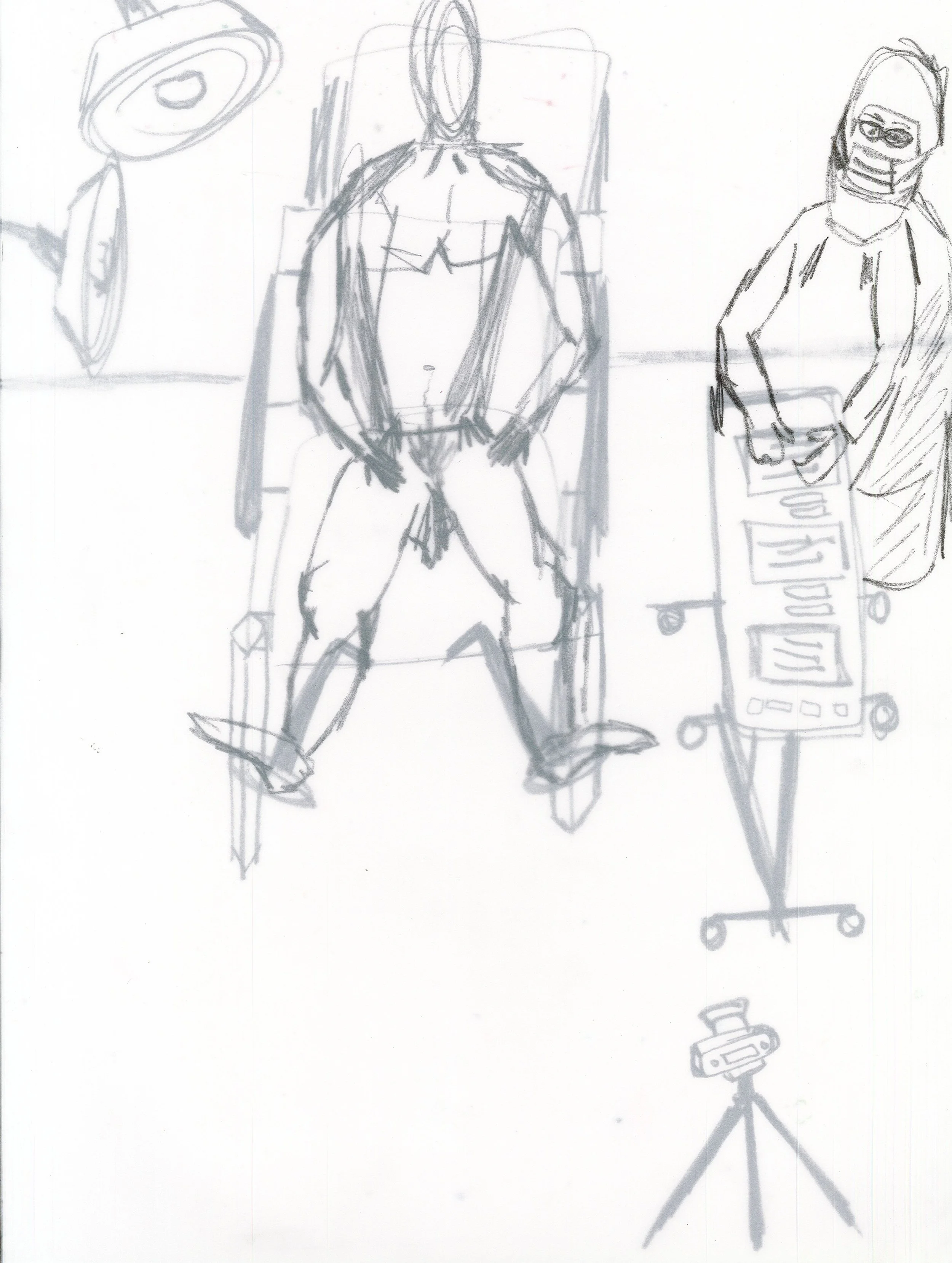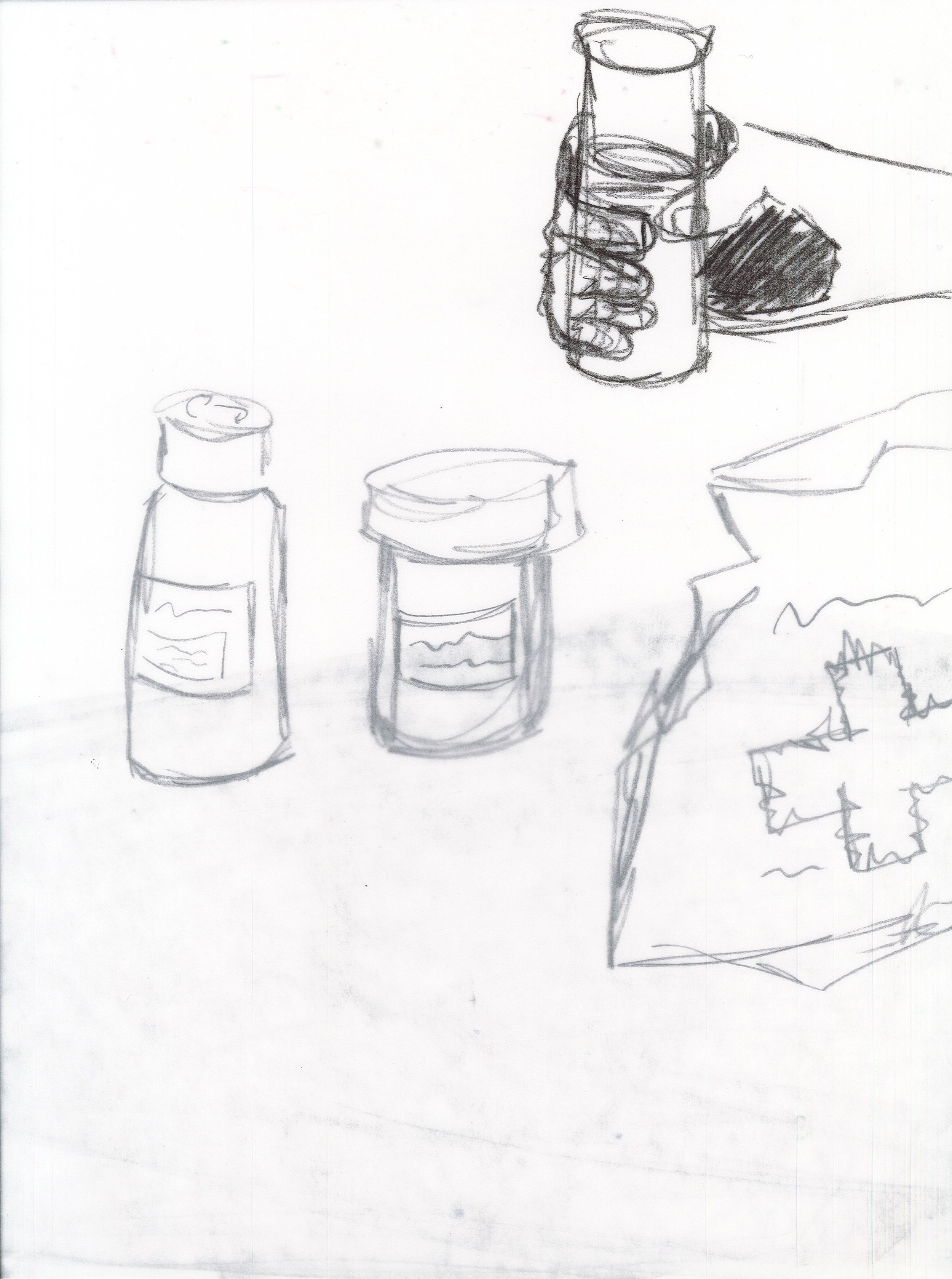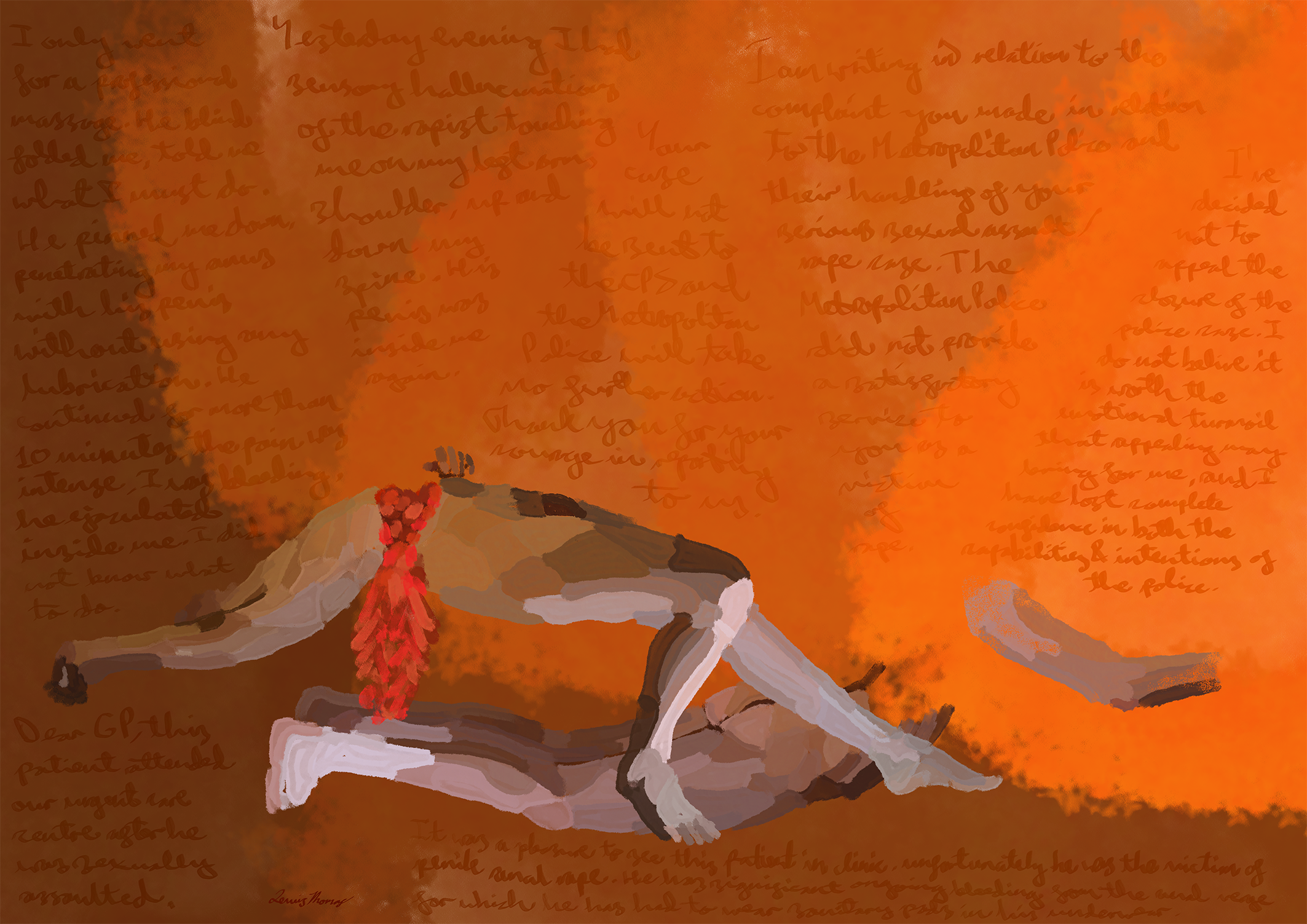Artwork by the founder
“The shame isn't ours to feel, it's theirs”
- Gisèle Pelicot (2024)
Rape happened here series
Raped here plaque
Laser-cut frosted-acrylic bolted using zinc nuts, bolts and washers to vinyl-mounted aluminium, with ability to be permanently bolted onto an external wall
30cm x 30cm
2025
Why a plaque?
Commemorative signage highlights and frames histories in ways which inform our societal present, such as London’s Blue Plaque Scheme.
These publicly facing vehicles of story telling could alternatively be used to lay bare well known but little-discussed contemporary injustices and power disparities which exist within our society (i.e. ‘taboos’).
The artist wanted to imagine a world in which these plaques are erected on residential and commercial addresses where these injustices have happened in reality, such as reported rapes.
He specifically want to take this imagined concept and look at it through the social paradigm of male-on-male rape, inviting in wider engagement with (often under-heard) discourse.
He drew directly from his lived experience as a survivor of male-on-male rape.
The plaque cannot be exhibited at the location of the rape as – despite the artist asking – the building’s owners have not granted permission. But, he intend to exhibit the artwork in St John’s Wood of north London (the area of the rape) in future.
Raped here prints
Lithographic prints of ink on paper
Various sizes
2025
Collaboration
These prints are designed for other rape survivors to write directly onto them the location and date of the crime. The idea is to empower participating survivors to regain ownership of their narrative, whilst maintaining their anonymity – if they wish to do so – by using the “Injustice happened here” project’s name as their vehicle.
“Time passes, events take place, and the fractal networks of history are articulated with monuments constructed to ‘enforce a vision of the future that is predetermined by that values of the past as espoused by those in power in the present’, as art historian Cat Dawson argues in Monumental: How a Generation of Artists Is Shaping the Memorial Landscape (2025)…
As Dawson would contend, they [historical monuments] are engaged with the far more elusive goal of scripting narratives for future minds.”
— Carson Chan (2025) “Outside Time” in Frieze No. 254 [October 2025], p.108 (bold font added to quote)
Processing series
Trauma map
Graphite on four sheets of tracing paper, later mounted by hand to birch wood using nuts, bolts and washers
29.7cm x 40cm
2025
Drawn by body movement
The marks on the paper were drawn whilst walking continuously for one hour around the site where the artist was previously raped. He did not look at the paper or pencil whilst he walked, so that the lines drawn were primarily result of his natural movement and the vibrations through his body as he walked the route. The resulting artwork could be seen as a personal seismograph of trauma.
Trauma mobile
Set of six drawings of a chronological sequence during and immediately after the artist’s rape, whereby each drawing is comprised of graphite on the three sheets of layered tracing paper, all hanging from a ceiling using cable zip-ties in two asymmetrical columns, mirroring the structure of an infant’s mobile above their cot
Drawings 29.7cm x 42cm each, structure 80cm x 200cm
2025
(In)justice series
Agents of (in)justice prints
Lithographic prints of ink on paper
Various sizes
2025
Reframing through a survivor’s lens
Visualising the way some survivors feel after the perpetrator’s of their rapes have not faced justice, these blue prints have been made by taking Home Office and Metropolitan Police recruitment adverts, editing them on Photoshop, and using the resulting image to laser cut a printing plate onto acrylic.
Breaking point series
Rape scene
Charcoal and ink on paper
70cm x 50cm
2025
Escaping the torment of a demon
Hand-drawn digital illustration using Adobe Fresco on Asus ProArt device
2025









